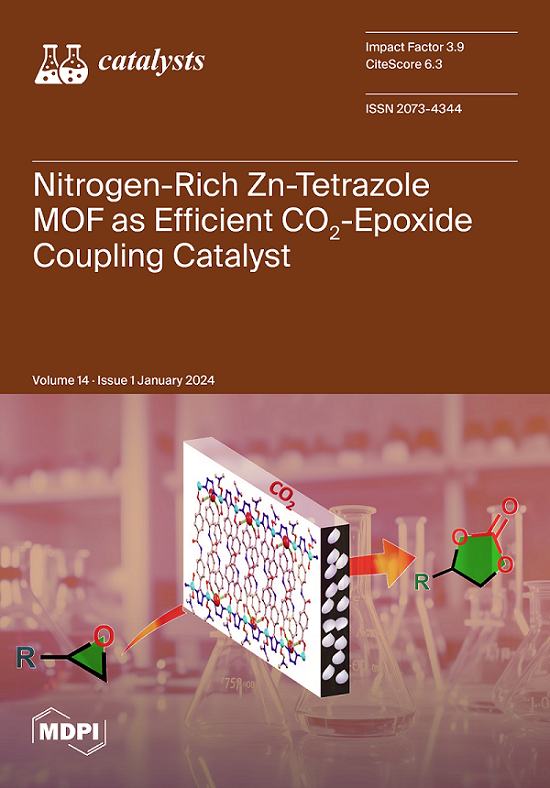Stability of Ruthenium/Carbon Catalytic Materials during Operation in Carbon Monoxide Methanation Process
IF 4
3区 化学
Q2 CHEMISTRY, PHYSICAL
引用次数: 0
Abstract
The stable activity of catalysts is an important characteristic, which determines their suitability for industrial applications. The purpose of this study was to investigate the stability of ruthenium systems deposited on carbon under conditions simulating long-term operation in CO methanation. Two series of Ru/carbon catalysts were prepared and studied during CO methanation in a hydrogen-rich gas stream. Two graphitized carbons substantially differing in their surface area (23 and 1457 m2/g) were used as supports, and Ru loadings of 3 and 6 wt.% were applied. The stability of Ru/C catalysts was examined in a 240 h time-on-stream test. The samples were characterized by CO chemisorption, XRD, TEM, Raman spectroscopy, TG–MS studies and CO-TPD. The stability of the catalysts over 240 h in the CO + H2 mixture depended on the support type and Ru loading. The highest CO conversion and increased activity was observed for both catalysts with Ru dispersion above 80%. The tested systems were also resistant to carbon deposition. Interestingly, a similar level of activity was obtained for 3 wt.% Ru supported on the low surface area carbon. It is presumed that the similar activity observed for systems with such different ruthenium dispersion is related to the presence of active sites of different strength and structure on the surface of both small and large Ru particles.钌/碳催化材料在一氧化碳甲烷化过程中的稳定性
催化剂的稳定活性是决定其是否适合工业应用的一个重要特征。本研究的目的是研究沉积在碳上的钌体系在模拟一氧化碳甲烷化长期运行条件下的稳定性。研究人员制备了两个系列的 Ru/ 碳催化剂,并对其在富氢气流中进行 CO 甲烷化反应的过程进行了研究。两种石墨化碳的表面积大不相同(分别为 23 和 1457 m2/g),用作载体,Ru 的负载量分别为 3 和 6 wt.%。Ru/C 催化剂的稳定性在 240 小时的流动时间测试中进行了检验。通过 CO 化学吸附、XRD、TEM、拉曼光谱、TG-MS 研究和 CO-TPD 对样品进行了表征。催化剂在 CO + H2 混合物中 240 小时的稳定性取决于载体类型和 Ru 负载。在 Ru 分散度超过 80% 的两种催化剂中,都观察到了最高的 CO 转化率和更高的活性。测试系统还具有抗碳沉积的能力。有趣的是,3 wt.% 的 Ru 在低比表面积的碳上也能获得类似的活性。据推测,在具有如此不同钌分散度的体系中观察到的相似活性与大小 Ru 颗粒表面存在不同强度和结构的活性位点有关。
本文章由计算机程序翻译,如有差异,请以英文原文为准。
求助全文
约1分钟内获得全文
求助全文
来源期刊

Catalysts
CHEMISTRY, PHYSICAL-
CiteScore
6.80
自引率
7.70%
发文量
1330
审稿时长
3 months
期刊介绍:
Catalysts (ISSN 2073-4344) is an international open access journal of catalysts and catalyzed reactions. Catalysts publishes reviews, regular research papers (articles) and short communications. Our aim is to encourage scientists to publish their experimental and theoretical results in as much detail as possible. Therefore, there is no restriction on the length of the papers. The full experimental details must be provided so that the results can be reproduced.
 求助内容:
求助内容: 应助结果提醒方式:
应助结果提醒方式:


